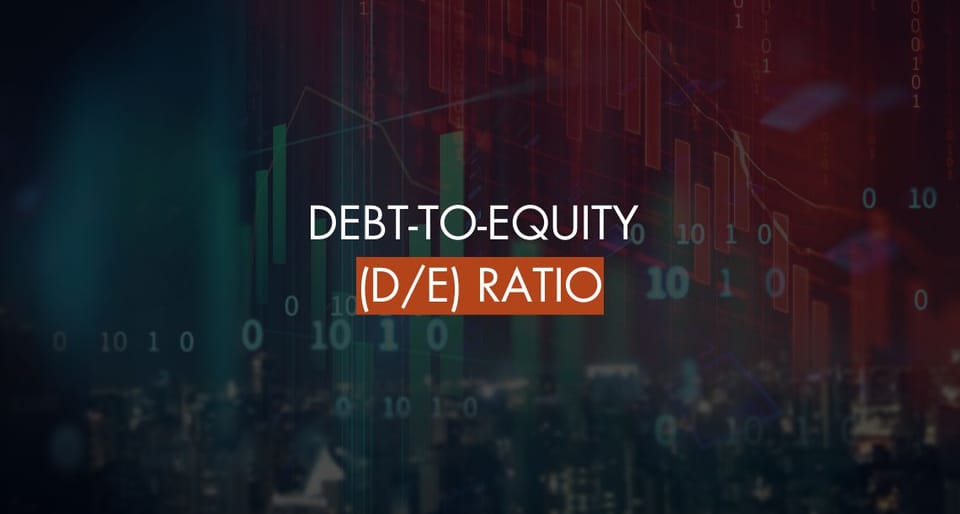Exploring Debt-to-Equity (D/E) Ratio: Measuring Financial Leverage

When analyzing the financial health of a company, understanding its use of debt is crucial. The Debt-to-Equity (D/E) Ratio is a significant metric that helps investors gauge a company’s financial leverage and risk exposure by comparing its total liabilities to shareholder equity.
What is the Debt-to-Equity (D/E) Ratio?
The Debt-to-Equity (D/E) Ratio is calculated by dividing a company’s total liabilities by its shareholder equity. It is a measure of the degree to which a company is financing its operations through debt versus wholly owned funds.
Importance of the D/E Ratio
Risk Assessment: The D/E ratio is a key indicator of financial risk. A higher ratio suggests that a company is more reliant on borrowing, which could be risky during economic downturns or when interest rates rise. Conversely, a lower ratio indicates less reliance on debt and potentially more stable financial footing.
Investment Decisions: Investors use the D/E ratio to assess whether a company’s capital structure is in line with its industry peers and to gauge the company's financial stability and efficiency in using its capital.
Creditworthiness: Lenders examine the D/E ratio to determine a company’s risk level as a borrower. A lower ratio generally signifies a more creditworthy company.
Analyzing D/E Ratios Across Different Sectors
The significance of the D/E ratio can vary greatly between industries. For example:
- Capital-Intensive Industries like manufacturing or utilities typically have higher D/E ratios due to the large amount of capital required for operations.
- Service-Oriented Industries might exhibit lower D/E ratios as they require less capital investment in physical assets.
Limitations of the D/E Ratio
- Intangible Assets: Companies with significant intangible assets like brand value or patents may have skewed equity values, impacting the D/E ratio.
- Industry Variations: Comparing D/E ratios across different industries might not provide meaningful insights due to varying capital needs and business models.
- Economic Conditions: External economic factors like interest rate changes or economic downturns can affect the reliability of historical D/E data.
The Debt-to-Equity Ratio is a valuable tool for assessing a company’s financial leverage and overall risk profile. By providing insights into how much a company relies on debt to fuel its growth, the D/E ratio helps investors make informed decisions. However, given its limitations, it should be considered as part of a broader financial analysis rather than in isolation.
FAQs
Q1: What is a good Debt-to-Equity ratio?
A1: A "good" D/E ratio varies by industry, but typically, ratios below 1.0 are considered healthier, indicating that equity exceeds debt. However, norms can differ significantly between sectors.
Q2: Can a company have a negative Debt-to-Equity ratio?
A2: Yes, if a company has negative shareholder equity (more liabilities than assets), it will have a negative D/E ratio, which usually signals financial distress.
Q3: Is a low Debt-to-Equity ratio always favorable?
A3: Not necessarily. While a low D/E ratio indicates lower financial risk, excessively low ratios may suggest underutilization of available debt, which could mean the company is not leveraging potential growth opportunities.
Q4: How does the D/E ratio affect stock prices?
A4: Generally, a high D/E ratio can depress stock prices due to perceived higher risk, whereas a lower D/E ratio might be viewed favorably by investors, potentially leading to higher stock prices.
Q5: Should the Debt-to-Equity ratio be used in isolation?
A5: No, the D/E ratio should be used in conjunction with other financial metrics and analysis tools to get a comprehensive view of a company’s financial health.

Member discussion